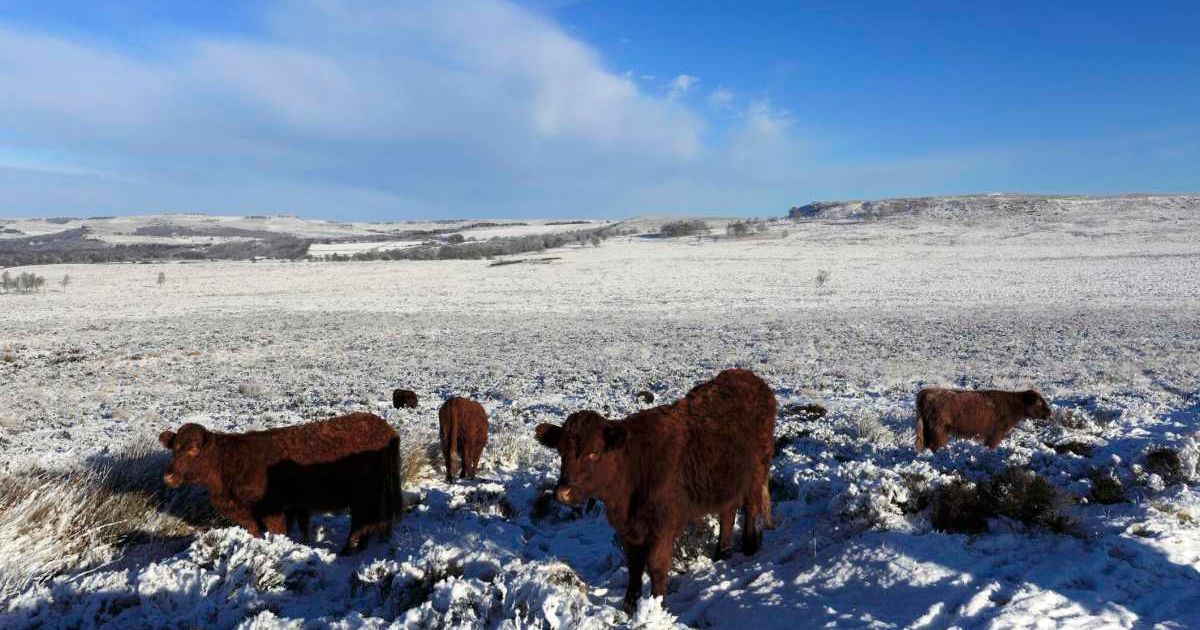British Moor Replaced Grazing Sheep With Cattle to Restore the Ecosystem — the Results Were Amazing

In the Peak District National Park, west of Sheffield, autumn is the time when nature drifts into a zone of meditative tranquillity, particularly the Big Moor in Derbyshire. Every day, the moorland brims with a palette of autumn colors. Camouflaged by this palette, red deer seem to be enjoying their rutting season. Most visitors flock to the park to witness these deer, sometimes sheep, but from now on, they would likely encounter more cows than any other animal, grazing on the grasses of the park, according to a report by The Guardian.

Visitors curious to watch the animals in rut amble along the moor’s boggy marshes and trails dotted with golden grasses. In the backdrop, clusters of cotton grasses, purple heather, and soft rushes sway in the cooling breeze, inviting birds like golden plovers, buzzards, meadow pipits, goldfinches, stonechats, and woodcocks to snuggle inside their nests. The autumn foliage splattered through the moor’s floor experiences footsteps that press upon it, the winds that lash and pick up on its material, and the animals that graze upon it to fill their bellies.

Since each animal has a unique grazing style, every experience acts as a unique pummelling session for the grasses and foliage, which transforms them in a different way each time. Sheep graze it in a different way than the cows or the deer. After careful observation of how different animals affect the grasslands, the moor’s officials have decided to replace sheep grazing with cattle grazing. The moor is introducing cattle in bulk, mainly the hardier species of cows such as red polls and Welsh blacks.

How is the grass affected differently by the grazing of a cow than when a sheep grazes it? The answer is the same as why a polar bear lives in ice, while a lion lives in a jungle. Sheep tend to graze with the help of their prehensile lips, with which they pull the grass and tear it off with a quick head movement. Inside their mouth, the grass is cut by the dental pads studded behind their teeth. While nibbling with this method, they eat up the palatable grass, but leave out the tough, tussock-forming moor grass. As a result, the land ends up becoming overgrazed, with tall grasses invading its space. Cows are much smarter.

According to Farm and Dairy, cows use their dexterous tongues to wrap around the grass and rip it off with a quick movement of the head. This enables the seeds scattered on the ground to become more established. The number of whinchats, for instance, has risen after the introduction of cows in the region. “Their breeds are easy-going creatures, but not as photogenic as Highland cattle, with their extravagant horns and shaggy coat. Those guys get more attention; a small herd elsewhere in the Peak is all over the socials,” the outlet describes.
More on Green Matters
Biologists Reintroduce Endangered Wild Horses Into Spain’s Highlands — The Results Amazed Everyone
Experts Reintroduced Beavers in the Netherlands — Now, People Fear the Country Might Drown in Flood
Scientists Spent 4 Years Tracking Reindeers in Finland — What They Found Changes Everything